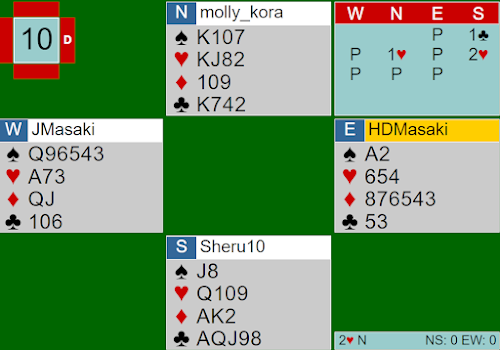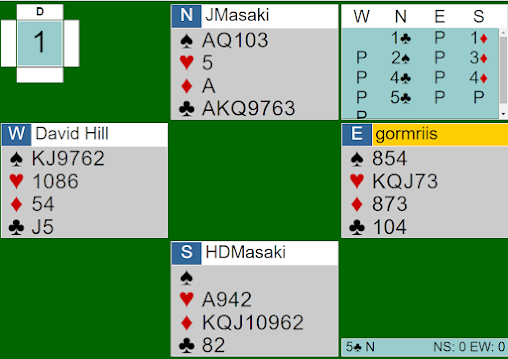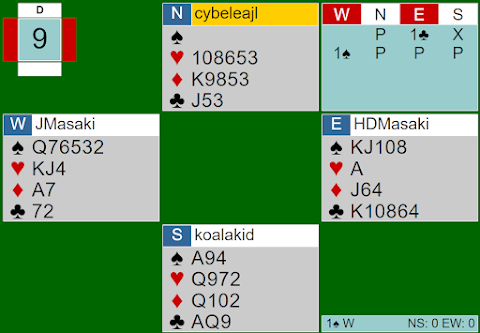Question:
Here’s a situation involving weak 2 bids. W has made a weak
2 opening of 2H. The E/W partnership has agreed that they will not take any
action in response to a weak 2 opening with less than 16 HCP, so W passes. S
has 16 HCP and 5 H should they have made a penalty double?
Mark:
Every conventional agreement has possibilities of benefits and downsides. Lacking agreement is often worse than the worst case scenario where you have two reasonable options.
New suits are forcing, just as in this case. I estimate that's the agreement of about 60% of expert partnerships. ACBL assumes that to be standard, so a non- forcing new suit, strongly rejecting the weak 2 suit, is Alertable.
Partnerships that play the "standard" forcing responses usually have more conservative standards for the kind of suit you need to open a weak 2, especially when vulnerable. Some insist on 2 of the top 3 or 3 of the top 5 cards in the suit at a minimum.
At this vulnerability, I would not open 2 hearts even though we have a non- forcing escape option. As dealer, you want to be pretty conservative in preempting, as partner could have a good hand that is prevented from being shown. In 2nd seat, you want to be most conservative, only making preemptive bids that are very accurately descriptive (i.e. nearly all the points of the hand in the bid suit), for instance, if you exchanged one of the low hearts for the Ace, and the Ace of diamonds for a low one. You have more latitude if your agreement would allow partner to make a non- forcing 2 spade bid by East.
When I say non- forcing, I mean a hand just like that one,
where you have very little likelihood of a game, just that you can't stand
partner's suit. If you have a hand that might want to get to game, you have to
start with a 2NT response. Now, for the possibility of South making a penalty
double. The red X does not come with a modifier of "PENALTY!" In
this case, it would be for takeout and you can be sure that partner would bid.
The only way to penalize W with a double is if partner makes a takeout double
and you pass happily, converting the takeout to penalty. Incidentally, think
about what would happen even if you could make a penalty double. You give the
opponents a chance to escape to the OK contract of 2 spades or the excellent
contract of 3 clubs. Defending 2 hearts un- doubled is much better.
Kudos to EW for having a definite agreement about
responding to a weak 2 with a new suit. It was an unlucky hand for that
agreement this time. Kudos to South for passing and probably collecting a top
board.
























